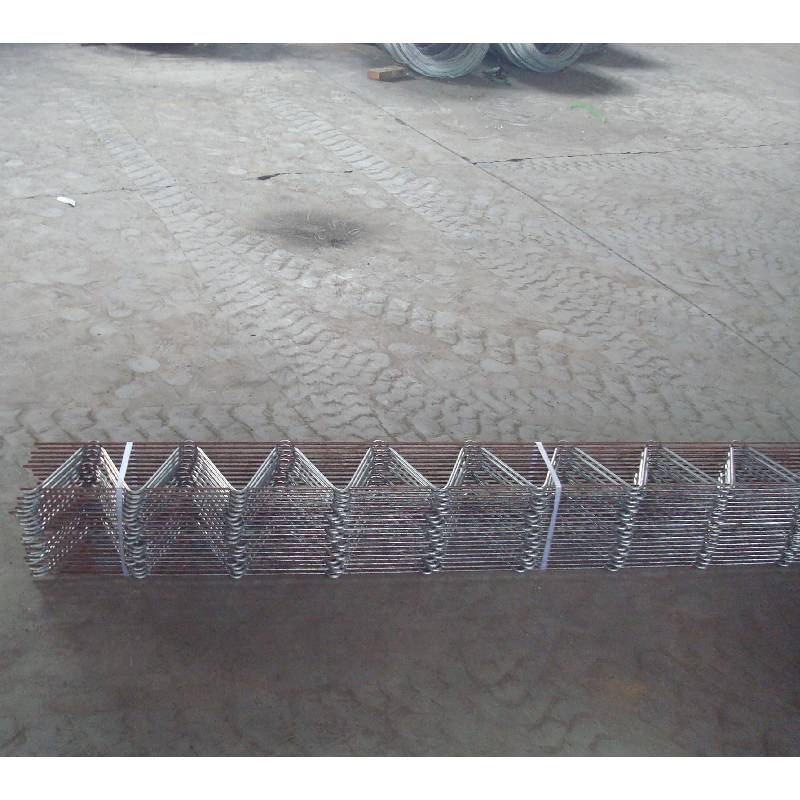
- Mobile Phone
- +8613931874955
- sales@cntcmetal.com
Truss Mesh Reinforcement Techniques for Enhanced Structural Stability and Durability
Truss Mesh Reinforcement Enhancing Structural Integrity
In civil engineering, the importance of reinforcing structures cannot be overstated. Among various reinforcement techniques, truss mesh reinforcement has gained significant attention. This method combines the principles of truss design with the innovative use of mesh materials, resulting in strong, lightweight, and durable construction solutions. By understanding the fundamentals of truss mesh reinforcement, we can appreciate its role in modern engineering and construction.
The Concept of Truss Mesh Reinforcement
Truss mesh reinforcement involves the integration of truss architecture with mesh frameworks to enhance the tensile and compressive strength of concrete and other composite materials. A truss consists of interconnected structural elements, typically forming triangular units. This triangular configuration is ideal for distributing loads evenly, reducing the risk of structural failure. When combined with a mesh, which consists of interconnected steel bars or wires, the overall strength and stability of the structure are improved significantly.
The mesh itself serves several purposes it distributes loads, provides crack control, and enhances the ductility of the concrete. Together, these elements create a composite system that not only bears weight but also resists environmental factors such as thermal expansion, movement due to seismic activity, and various load conditions.
Advantages of Truss Mesh Reinforcement
1. Weight Efficiency One of the most significant advantages of using truss mesh reinforcement is weight efficiency. The design utilizes less material while maintaining structural integrity. This lightweight approach not only reduces material costs but also minimizes the overall weight of the structure, allowing for greater flexibility in design and construction.
2. Enhanced Strength and Durability Structures reinforced using truss mesh exhibit enhanced strength and durability compared to traditional reinforcement methods. The interconnected nature of trusses allows for superior load distribution and better stress management. This results in structures that can withstand a higher degree of loading and resist deterioration over time.
truss mesh reinforcement

3. Versatility in Applications Truss mesh reinforcement can be applied in various construction contexts, including bridges, buildings, pavements, and retaining walls. Its adaptability makes it suitable for projects requiring complex designs and load-bearing capacities. Moreover, the system can easily be scaled to accommodate different project specifications.
4. Crack Control The mesh components of the system provide effective control over cracking in concrete structures. By controlling crack propagation, truss mesh reinforcement helps maintain the aesthetic appeal and longevity of structures, minimizing the costs associated with maintenance and repair.
5. Cost-Effectiveness Finally, the overall cost of construction can be significantly lowered with truss mesh reinforcement. The reduction in material usage, along with minimized labor costs due to simpler installation processes, contributes to lower overall project budgets. Moreover, the durability of such structures translates into lower lifecycle costs.
Applications in Modern Construction
Truss mesh reinforcement finds applications across several sectors within civil engineering. In commercial construction, it has been utilized in the design of large-scale shopping centers and multi-story buildings, where load-bearing capacity and longevity are critical. In infrastructure projects, such as bridges and highways, truss mesh ensures safety and stability against environmental challenges, including wind and seismic forces.
Moreover, the truss mesh system is increasingly being used in precast concrete elements, allowing for faster construction times and improved quality control. As the industry shifts toward sustainable practices, the efficiency of truss mesh reinforcement aligns with eco-friendly approaches by utilizing fewer resources without compromising quality.
Conclusion
Truss mesh reinforcement represents a significant evolution in construction techniques, combining the principles of truss design with the practical benefits of mesh frameworks. Its advantages include weight efficiency, enhanced strength, versatility, effective crack control, and cost-effectiveness. As construction technology continues to advance, innovations like truss mesh reinforcement will play a crucial role in creating structures that are not only safe and durable but also economically viable. Engineers and architects must continue to embrace such techniques to meet the growing demands of modern infrastructure while ensuring sustainability and safety.
share:
-
Your Source for Concrete Wall Ties and Masonry AccessoriesNewsJul.10,2025
-
Unlocking the Power of Iron Wire for Every ProjectNewsJul.10,2025
-
Explore Advanced Chain Wire and Stainless Steel Mesh FencingNewsJul.10,2025
-
Discover the Benefits of Annealed Wire ProductsNewsJul.10,2025
-
Discover China Stainless Steel Wire Mesh SolutionsNewsJul.10,2025
-
Build with Confidence Using High-Performance Masonry AccessoriesNewsJul.10,2025
-
Why Sacrificial Formwork Is Redefining Underground ConstructionNewsJun.06,2025



















